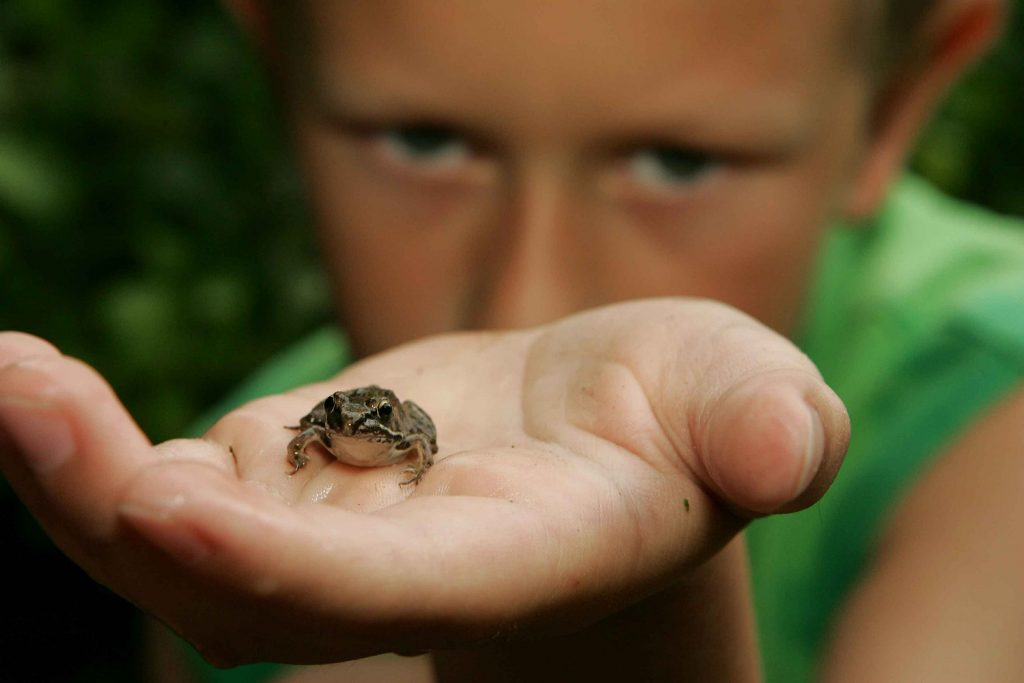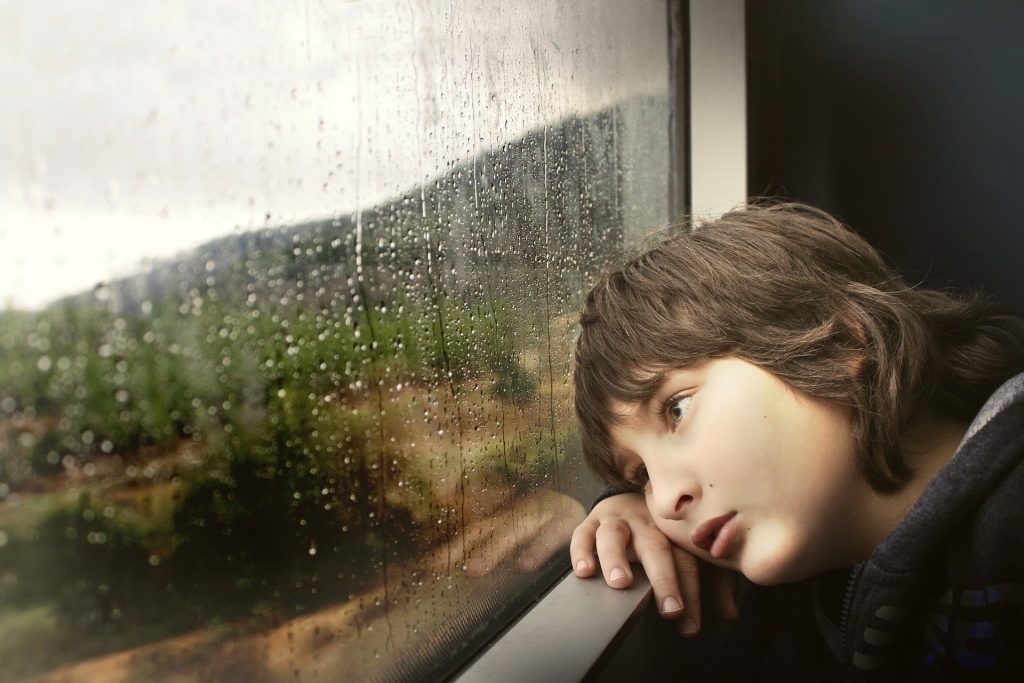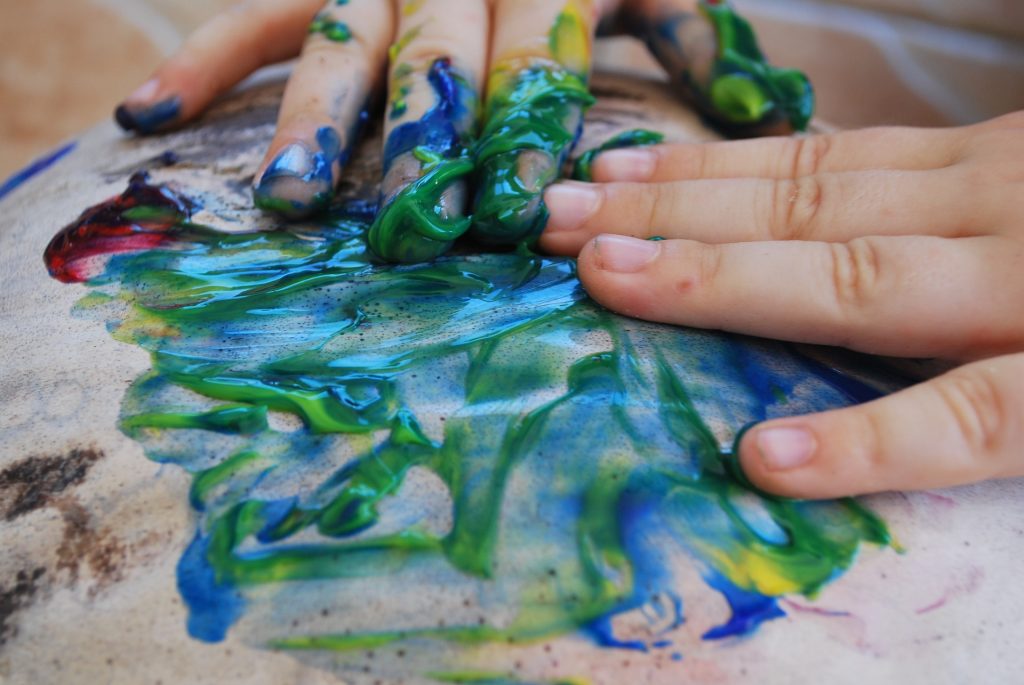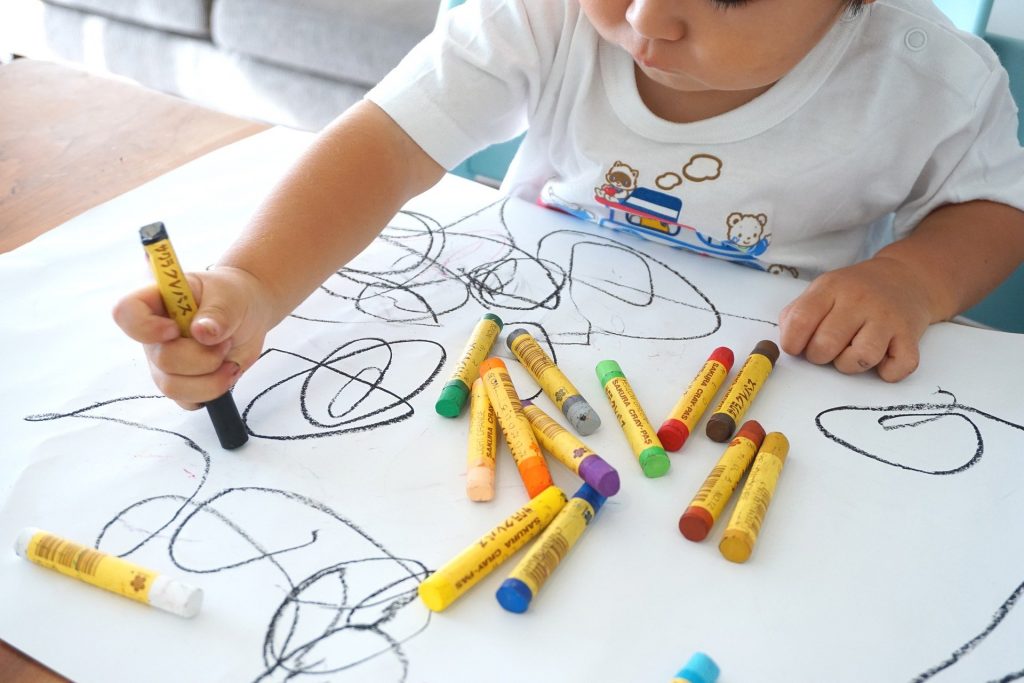Parenting
How to Raise Creative Kids
“There are no rules in art!” My bright-eyed four-year-old happily declares. She is scribbling purple marker all over her wobbly drawing of our family. I cringe, wanting to stop her. But, I can’t, because of our motto: there are no rules in art. I want her to enjoy the process and not worry about what it is “supposed” to look like. However, sometimes she gets mad because she doesn’t know how to draw what she wants. That’s because, of course, there are some rules in art. But, failing is part of the creative process, because it requires you tackle the problem again in a different way.
Most importantly, remember that this is a family endeavor. Pulling children away from their devices and plunking them into the physical world to play with nothing but you and a cardboard box may be a shock for them (and you!). At RiseBrite, we believe the bonds that are built and strengthened between you because of this creative play – not to mention the learning that happens – will lead them into a more innovative life with more fulfilling relationships. So, when thinking about how to raise creative kids, we need to know exactly when to step out and watch, and when to step in and help.
Get Out of the Way!
Children have an innate curiosity, but it is sometimes quashed by well-intentioned adults. Perhaps you have witnessed (or said yourself) something like the following, while playing with a child:
“Hey, the legs are coming right out of his head! Where’s the body?”
“You can’t make your bridge so long, it will break.”
“Here, let me do it.”
You get the idea. We want to impart our wisdom. Certainly, we can see that their idea is not going to work, so we step in and fix it before the child even has a chance to see it fail. As a result, they make the bridge the way you told them to, but they don’t really know why. So, to help your child find creative solutions on their own, consider responses like these:
“That looks just like me!”
(don’t correct the circle head/legs drawings, tadpole humans are normal!)
“What could you add or take away to help the bridge stay up in the middle?”
“Try again.”

If you want to know how to raise creative kids, you must ask creative questions that lead to – and don’t offer – a solution. This also leads to confidence – have you ever heard a child exclaim: “I did it because you told me what to do!” Of course not. Children proclaim, “I did it all by myself!”
Ideas to get started:
Firstly, prompt your children with interesting questions, and then explore the possible answers together. So, your role as parent is to guide the thinking without leading them to the answer you have in mind. Secondly, listen to what they come up with, and praise and acknowledge their ideas. For instance, ask your children thoughtful questions that promote creative thinking by starting with “I wonder if…” or “I wonder why…” As a result, your children will begin asking you interesting questions in return! Once, my daughter asked me, at the age of three: “Mom, if we never go to sleep, does it mean tomorrow never comes?”
Let Your Child Lead You

Child-led learning is where your child gets to decide what they are interested in. For example, my kids and I were once on a bug hunt when we saw a frog cross our path, to their immense delight. That could have been the end of it, but instead, we forgot about bugs and followed that frog for 20 minutes. When we got home, we imagined where he was going, what his family was like, we did frog research and drew frog pictures. To this day, they still remember what they learned. One study shows that people are better at learning information they are curious about. Consequently, a curious child will take more risks in their learning by wondering and asking questions. According to educator Richard Schuman, creative thinking is inherently “…wholly self-directed” and not driven by external forces. (1) It’s the difference between telling a child all about the stars, when he is really wondering how to get to the moon.
Ideas to get started:
First, begin by observing your child to see what piques his interest. Then, follow where they want to go next. If you are stuck, start with a broad theme or idea, and allow them to get specific. For example, instead of saying, “let’s make some cookies!” explore some crazy baking ideas and see where it goes. In the same vein, explore outside and notice what they are drawn to. Read non-fiction books about the world to introduce them to different cultures, people and food. Finally, know when to move on. Curiosities, like most interests at a young age, come and go!
Wonder Aloud
A simple, but effective idea when considering how to raise create kids is to model problem solving aloud, so your children can hear your process. For example, at the dishwasher I will wonder: “Now, where am I going to put this last plate? “Hmm…maybe I’ll take this one out, move this one here…yep, got it!” You can also wonder aloud about quirky things. “I wonder why the wheels on a bike are round anyway. What if they were square?” This practice has become so common in our house, that I hear my daughter wondering aloud all the time, and my two-year old son is starting to copy now, too. It’s wonderful to hear them trying different things, and it takes almost no effort!
Ideas to get started
Obviously, getting started can take a bit of getting used to, since we are used to keeping most our adult thoughts in our heads. However, children love to know what adults are thinking and talking about, so let them in on your thoughts. Most importantly, begin to look at the world in new ways yourself. Consequently, your own curiosity will feed theirs, and in no time you will both be experts in wondrous thinking.
Embrace Boredom

When I hear “I’m bored,” in my house, I know something creative is coming. So, I give my kids about 10 minutes to start their own play, and if nothing has happened by then, I will help with a prompt. To be clear, it can be a painful 10 minutes, but if you wait…it will happen. Not to mention, they get better and faster at settling into independent play with more practice. As a society, we are starting to appreciate boredom again, especially since it is now known that free play leads to more creative thinking in children. But, it is really hard to sit through that uncomfortable space between activities. I do love playing with my children, but I try to step away because adults should not get too involved. Often, a simple prompt like this is enough to stimulate at least an hour of play: “What if all the barbies got together and made a garage sale, do you think the LOL dolls would want to buy any of it?” And off they go. Imagination takes time, so give them plenty of it to get this going.
Ideas to get started:
When your kids are bored, almost anything can spark the beginning of an imaginative journey. So, when in doubt, start with a fort, fill it with some pillows and your kids will take it from there. Also, I ignite creative thinking with odd objects around the house and let them wonder what they are for. Certainly, role-playing with dolls, cars and houses are helpful, but are not necessary. My son has even used a flyswatter as a bad guy, which was surprisingly effective. In addition, any kind of real-life pretend games are a favorite, especially if you play along. Favorites in our house include toy car wash with real toothbrush scrubbers, grocery store from the pantry, restaurant in the kitchen, veterinarian with toy animals and rescue the baby from the jail (their one-year old sister!).
Get Messy and Unperfect

The first time I let my daughter paint, I put her in a bathtub lined with paper. I didn’t want the mess! So, this one is tough. I always catch myself wiping up sprinkles in the middle of a project, putting markers back before the art is done. I get it, it’s hard to watch a mess accumulate. However, when you are focused on finishing and tidying up instead of the process, you risk stunting the creativity by interrupting. When kids create, they love to have access to all the supplies at their fingertips. So, creativity is inherently messy. Once you have learned how to raise creative kids, it will not matter that your supplies are not perfectly organized, or your children’s artwork is not “Pinterest-ready.” Ultimately, children don’t care if the brush has eight different colors on it at once or if the playdough is mixed up. Apples can be purple; the grass can go on the top. Part of allowing creativity to flourish is to step away from our own ego, what is expected, and what you thought it was going to be.
Ideas to get started:
You do not a lot of supplies to create. In fact, it’s best to keep it simple. When creating art, you will need a really good paint set, some crayons or markers, some playdough, paper or cardboard, glue, tape and maybe some sparkles. Also, if you’re just starting out, you can model some ideas, as some children find a blank page intimidating. Try some creative techniques with no end result in mind and remember to enjoy the process! Finally, have your kids help clean up. Even if it doesn’t really “help” very much, it’s a good habit to get into!
If you have been wondering how to raise creative kids, it should be comforting to know that it does not mean changing everything you have already been doing. Simply start by incorporating some interesting questions into your day, noticing and fostering your child’s natural curiosity and allowing the space and freedom to make messy mistakes. Ultimately, creative children become creative adults, with unique and innovative ideas to solve the world’s problems. Or at the very least, look back on a childhood that was full of wonder and exploration.
References
- Suchman, J. R. (1962). Creative Thinking and Conceptual Growth. Gifted Child Quarterly, 6(3), 95–99. https://doi.org/10.1177/001698626200600309




